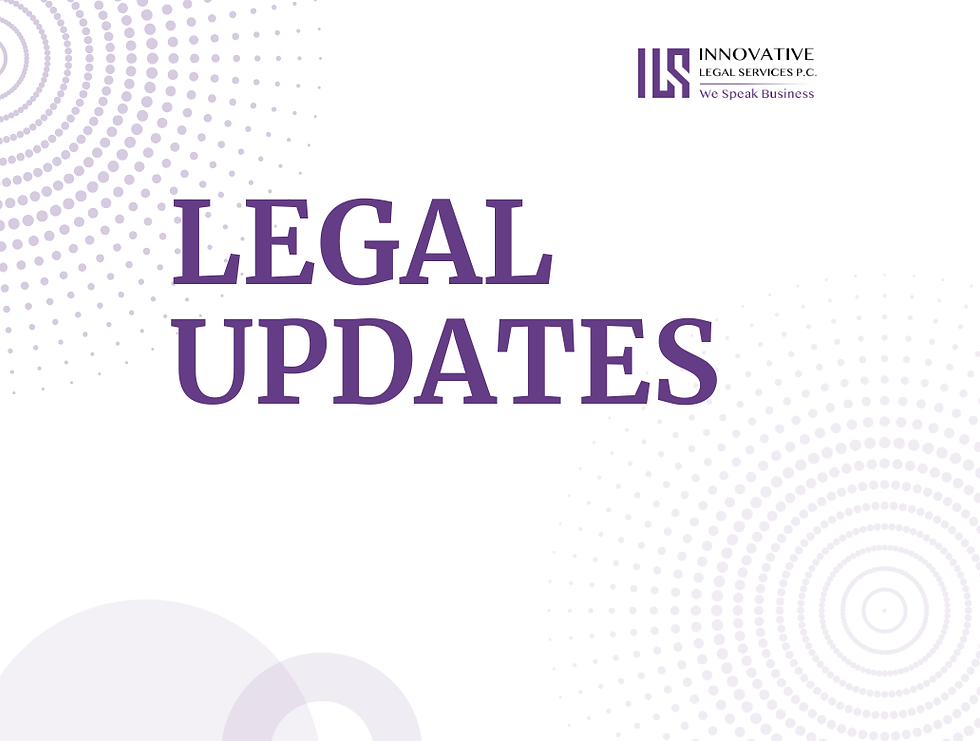Supreme Court Overturns Chevron Doctrine: Implications for Employers
- Richard Liu
- Jul 2, 2024
- 3 min read
On June 28, 2024, the U.S. Supreme Court overturned the decades-old Chevron doctrine, which required courts to defer to a federal agency’s interpretation of a law when a statute was ambiguous. The Court discarded that standard in favor of judicial interpretation, enabling courts to strike down agency rules more easily and giving employers a powerful tool to combat regulatory overreach. Here’s what you need to know about this momentous ruling and its implications for employers.
For additional information regarding the Chevron doctrine and to find out how this could impact your business, please contact our Managing Partner, Richard Liu, at richard.liu@consultils.com.

Understanding the Chevron Doctrine
The Chevron doctrine mandated that courts defer to an agency’s interpretation of a statute if the statute was ambiguous and the agency’s interpretation was reasonable. This two-step framework involved:
If the statute’s text was clear, both the agency and the court had to follow it.
If the statute was ambiguous, the court would defer to the agency’s interpretation if it was reasonable.
This deference allowed agencies significant leeway in shaping regulations with minimal judicial interference, influencing various aspects of employment law over the past four decades.
The recent ruling ends Chevron deference, requiring courts to exercise independent judgment in interpreting statutes and reviewing agency interpretations, rather than deferring to them. The ruling emphasized that:
Courts are not to defer to agencies simply because a statute is ambiguous.
Agencies’ interpretations can still guide courts but do not have binding legal effect.
Impact on Employers
While today’s decision does not change existing regulations or past cases that relied on Chevron, it will make it easier to challenge regulations and may limit the ability of agencies to reshape labor and employment law to the degree they have over the last 40 years. The decision is likely to affect pending legal challenges to various federal agency rules, including:
EEOC: Regulations implementing the Pregnant Workers Fairness Act (PWFA), currently enjoined in parts of Louisiana and Mississippi.
DOL: Rules increasing the minimum salary threshold for FLSA’s “white collar” exemptions, defining “independent contractor” vs. statutory employee under the FLSA, limiting the time tipped employees can spend on non-tip-producing work, revising Davis-Bacon and Related Act prevailing wage regulations (recently enjoined), and implementing an executive order boosting the minimum wage for federal contractors.
OSHA: The new “walkaround” rule allowing union organizers to accompany OSHA inspectors on workplace inspections.
NLRB: The joint-employer rule.
FTC: The rule banning most non-compete agreements.
Strategic Steps for Employers
While the Supreme Court’s decision will not impact employers immediately, it is important to take proactive steps to prepare for potential changes:
Stay Informed: Continuously monitor legal developments and court rulings that may impact workplace regulations. Pay special attention to decisions across different jurisdictions to manage compliance complexities for multistate operations.
Review Policies and Practices: Conduct a comprehensive review of your workplace policies and practices to identify those reliant on federal agency guidance. Consult with legal counsel to determine necessary adjustments in anticipation of regulatory changes or legal challenges.
Reevaluate Litigation Strategies: Collaborate with your legal team to reassess ongoing litigation and agency investigations. The new judicial landscape may present additional opportunities to challenge existing regulations or defend against agency actions.
Monitor State and Local Regulations: Keep abreast of state and local regulatory developments, which may diverge from federal standards. Be prepared for increased regulation at these levels as state lawmakers respond to the reduced influence of federal agencies. Adjust your compliance strategies accordingly to ensure adherence to all applicable laws.
The Supreme Court’s decision to overturn the Chevron doctrine marks a significant shift in regulatory oversight, offering employers both opportunities and challenges in navigating this new legal landscape. Staying informed and proactive will be crucial in managing compliance and effectively handling workplace regulations.
For additional information regarding the Chevron doctrine and to find out how this could impact your business, please contact our Managing Partner, Richard Liu, at richard.liu@consultils.com.

Richard Liu, Esq. is the Managing Counsel of ILS. He serves clients as a management-side defense lawyer specializing in employment and business litigation. Richard is also an expert on litigation prevention and compliance. He regularly advises Fortune 500 companies and startups on employment, labor, and commercial matters.
Email: richard.liu@consultils.com | Phone: 626-344-8949
*Disclaimer: This article does not constitute legal opinion and does not create any attorney-client relationship.

Comments